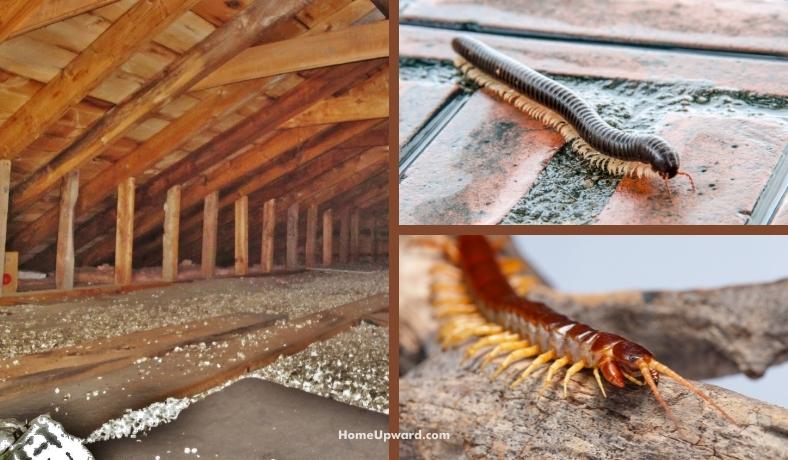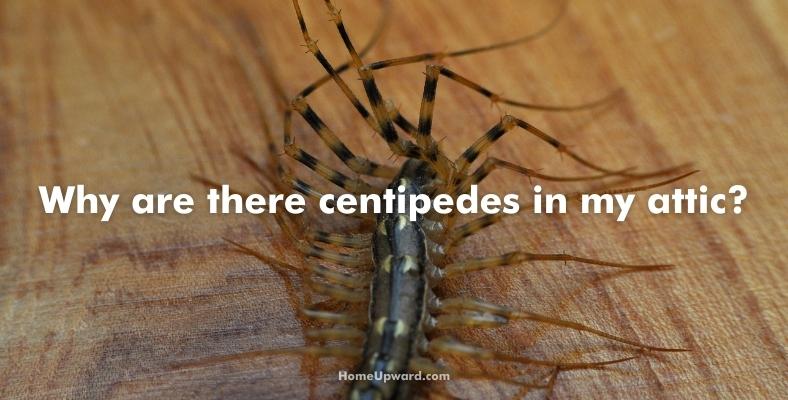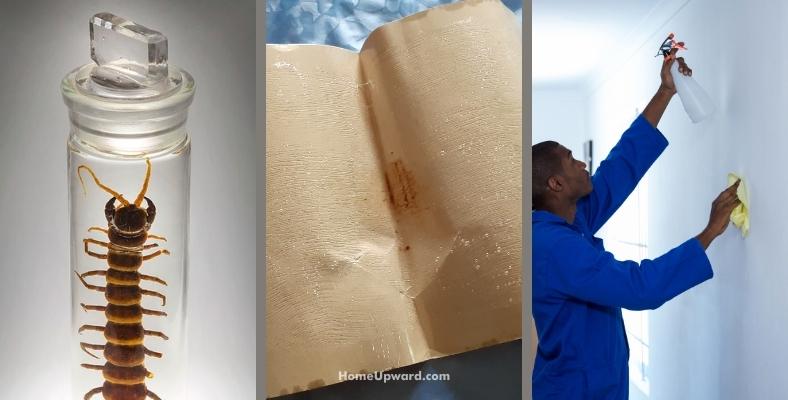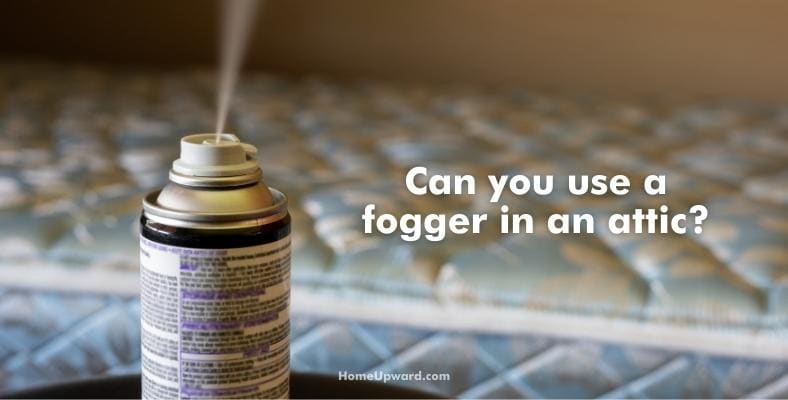Contents
Why Are There Centipedes in My Attic?
The most common reason for a centipede infestation in the attic is the presence of excess moisture. Centipedes prefer inhabiting moist locations in the home, including bathrooms, basements, kitchens, attics, and crawl spaces.
Warm, dark, and hidden away, your attic is a great hiding space for these weird critters with many legs. If you spot centipedes there it’s likely due to a hidden water source that’s attracting them.
While a centipede bite can be painful, centipedes are relatively harmless insects that aren’t really a threat to property or health risk to humans, unlike other common household pests. Don’t stress out over dealing with them as there are some things you can do as you’ll see below.
How Do I Get Rid of Centipedes in My Attic?
To get rid of centipedes in attic spaces it’s critical to get rid of any standing water and deal with wetness. Some things to check are:
- High humidity and poor ventilation.
- A leaky roof or backed up drains, etc, that allow standing water.
- Clutter, stored items, or building materials piled up that provide a home for them.
If you’re dealing with a high humidity problem may be worthwhile to install a dehumidifier to decrease the moisture level.
Getting rid of the centipedes
- Try to capture the centipedes by trapping them in a jar or cup and relocating them far away from the home.
- Laying sticky traps is another good option for getting rid of the problem. The biggest advantage of sticky traps is they not only capture centipedes but also other bugs or insects in the attic that they might be feeding on.
- Insecticide spray can work well to end the problem by killing any remaining centipedes on sight.
- Diatomaceous earth is a dust-like pest control treatment that kills all sorts of insects with an exoskeleton like roaches, ants, and much more.
Can You Use a Fogger in an Attic?
Yes, you can definitely use a fogger in the attic to eradicate any exposed insects. However, it’s important to know that it won’t penetrate the insulation which can make it ineffective for bugs and insects hiding in it. Foggers sometimes require several treatments before a bug problem is all done.
Take care when using a fogger
You’ll have to leave your home (with your pets, if you have any) after releasing the fogger for about four hours as the gas can be toxic to inhale. There’s no getting around the need to take precautions when using a fogger or bug bomb.
Lastly, it is crucial not to over-fumigate and use the right-sized bug bomb for that attic don’t use one that’s too small, either, as that’s not going to fully help.
How To Prevent Centipedes From Entering Your Home
Reduce Moisture
As I mentioned above, centipedes thrive in damp areas which means it’s so important to keep excess moisture buildup from happening. A good amount of the time this means repairing any water leaks and using dehumidifiers and exhaust fans to keep the home dry.
Good ventilation is also important in attics and crawl spaces because it helps prevent the growth of mold and mildew…so you’re actually dealing with two problems at once!
Eliminate Clutter
Centipedes prefer places that make a safe hiding spot where they can nest. A cluttered home offers just that. Remove any unwanted items from the basement, attic, and crawl spaces, and clear away outdoor debris like leaves and grass clippings. Store firewood away from the house.
Eliminate Food Sources
Centipedes typically feast on other bugs and insects. Common insects that make up the centipede diet include:
- Spiders
- Cockroaches
- Bedbugs
- Moths
- Mites
- Silverfish
- Flies
- Snails
- Slugs
- Beetles
- Millipedes
Dealing with these means you’ll remove their food source and help keep them under control that way as well.
Block Entry Points
You should check your home for and seal gaps, cracks, and crevices that you find using caulk, wire mesh, foam spray, or spray gap sealers. This is the same approach used in rodent proofing so you’ll actually be prevening rats and mice from getting in as well (or other little pests that might find your house inviting).





